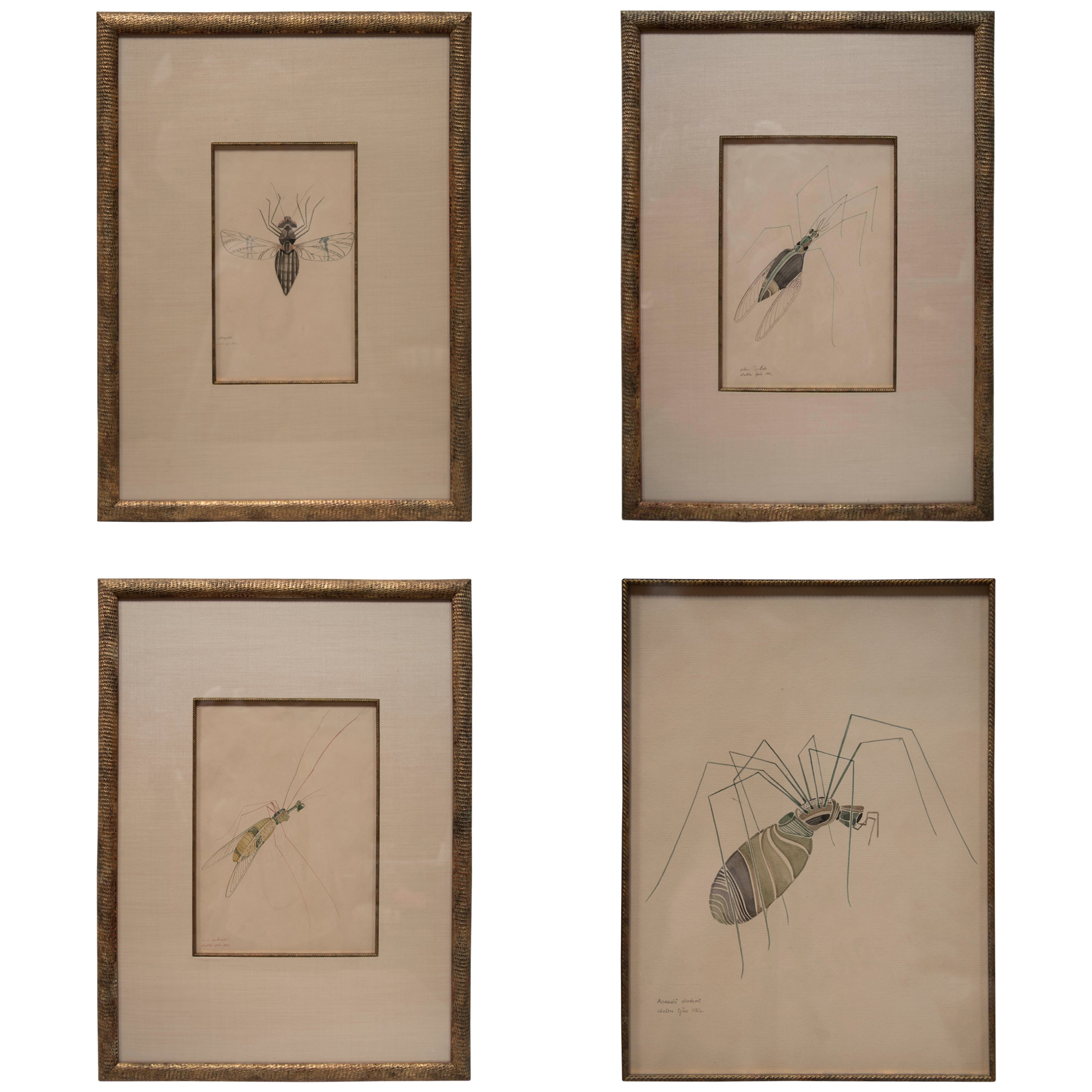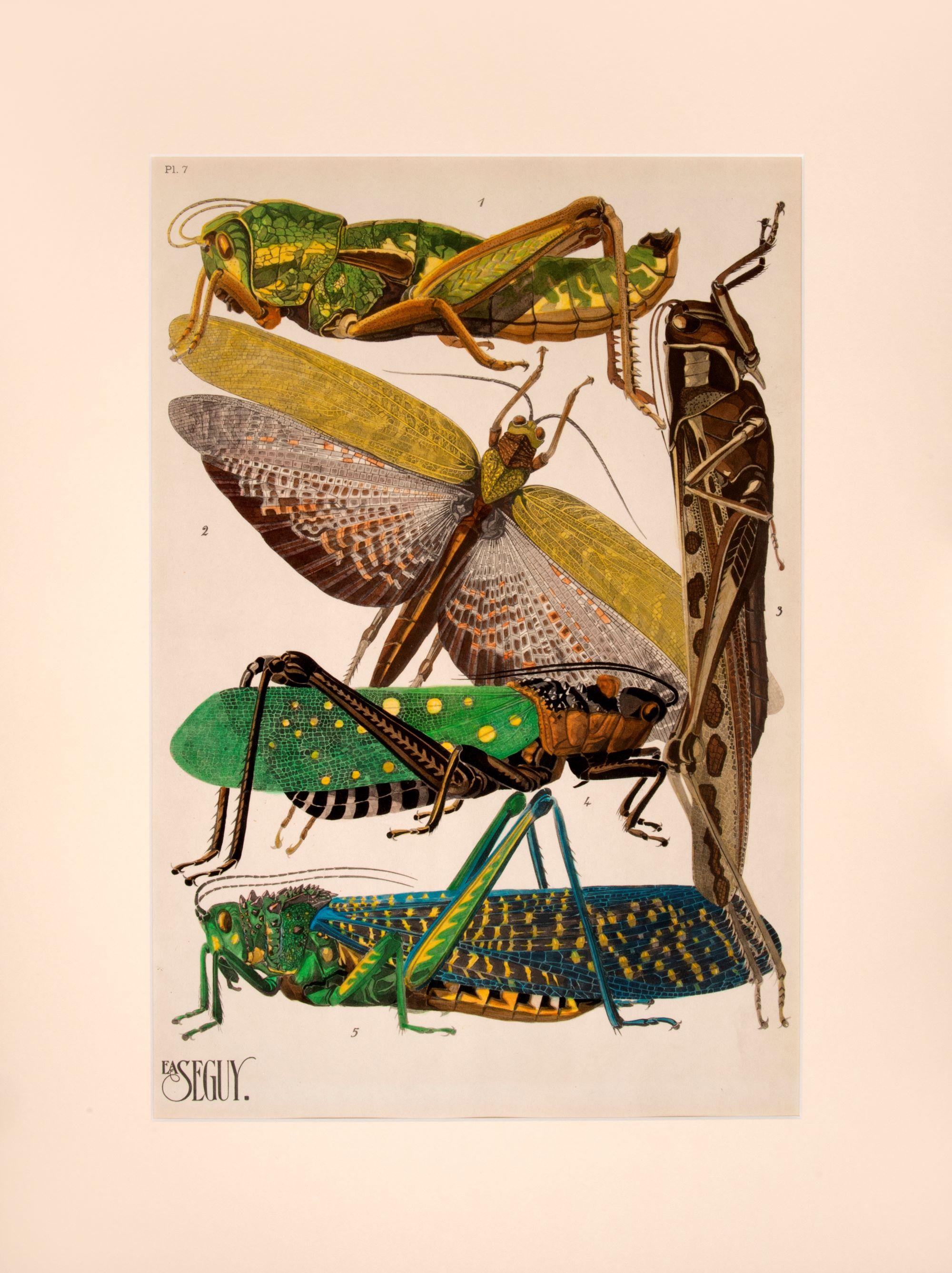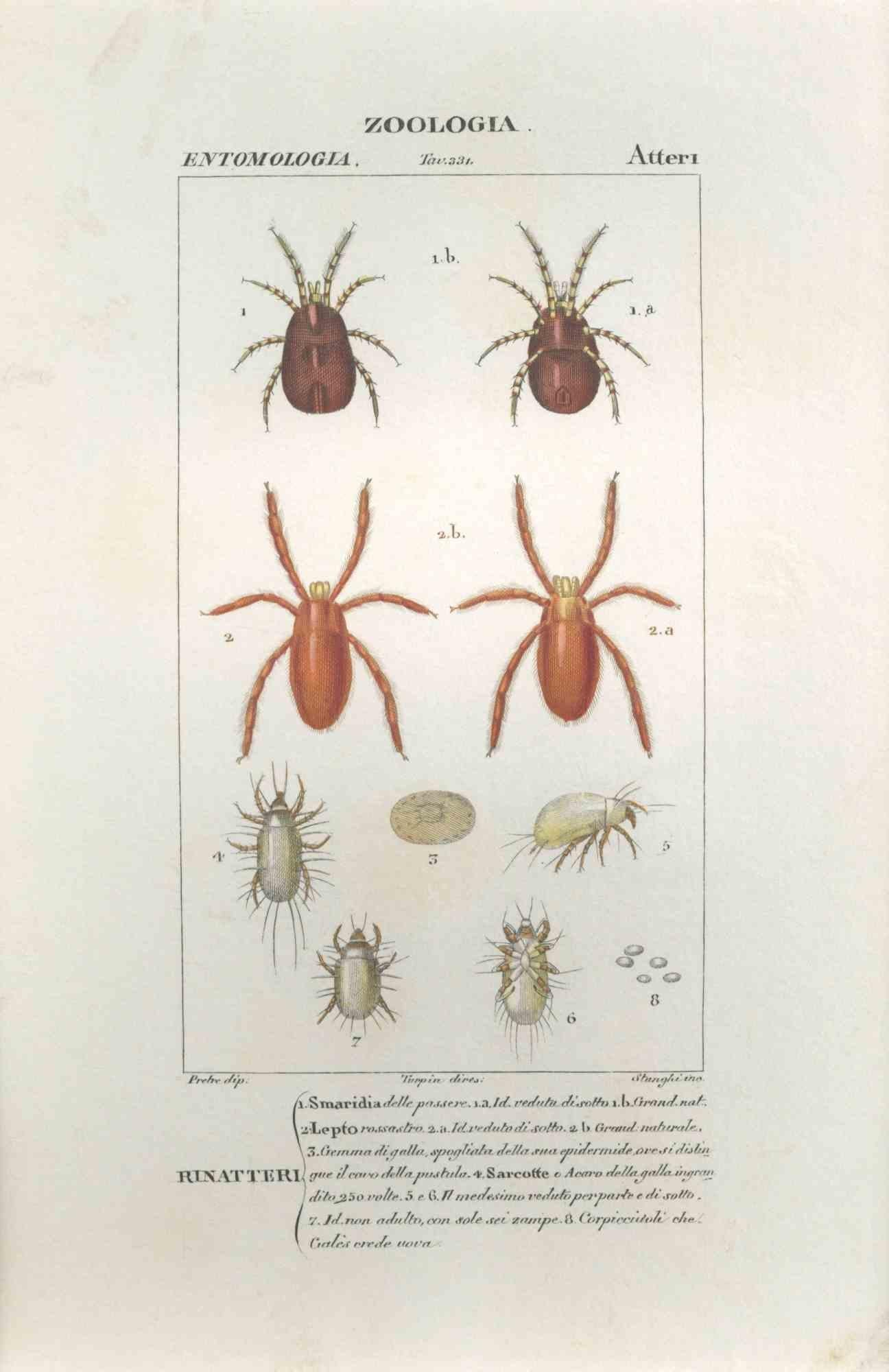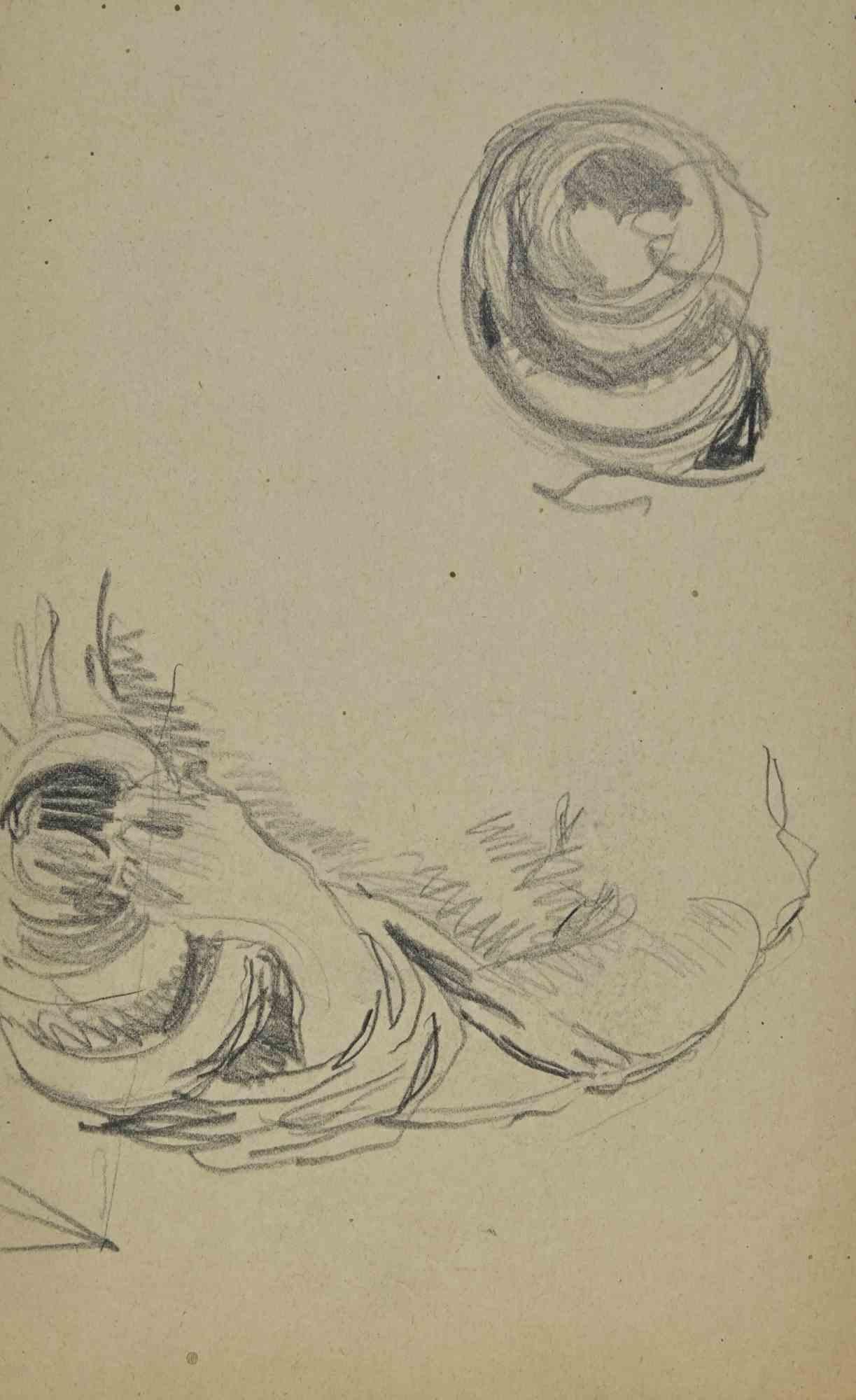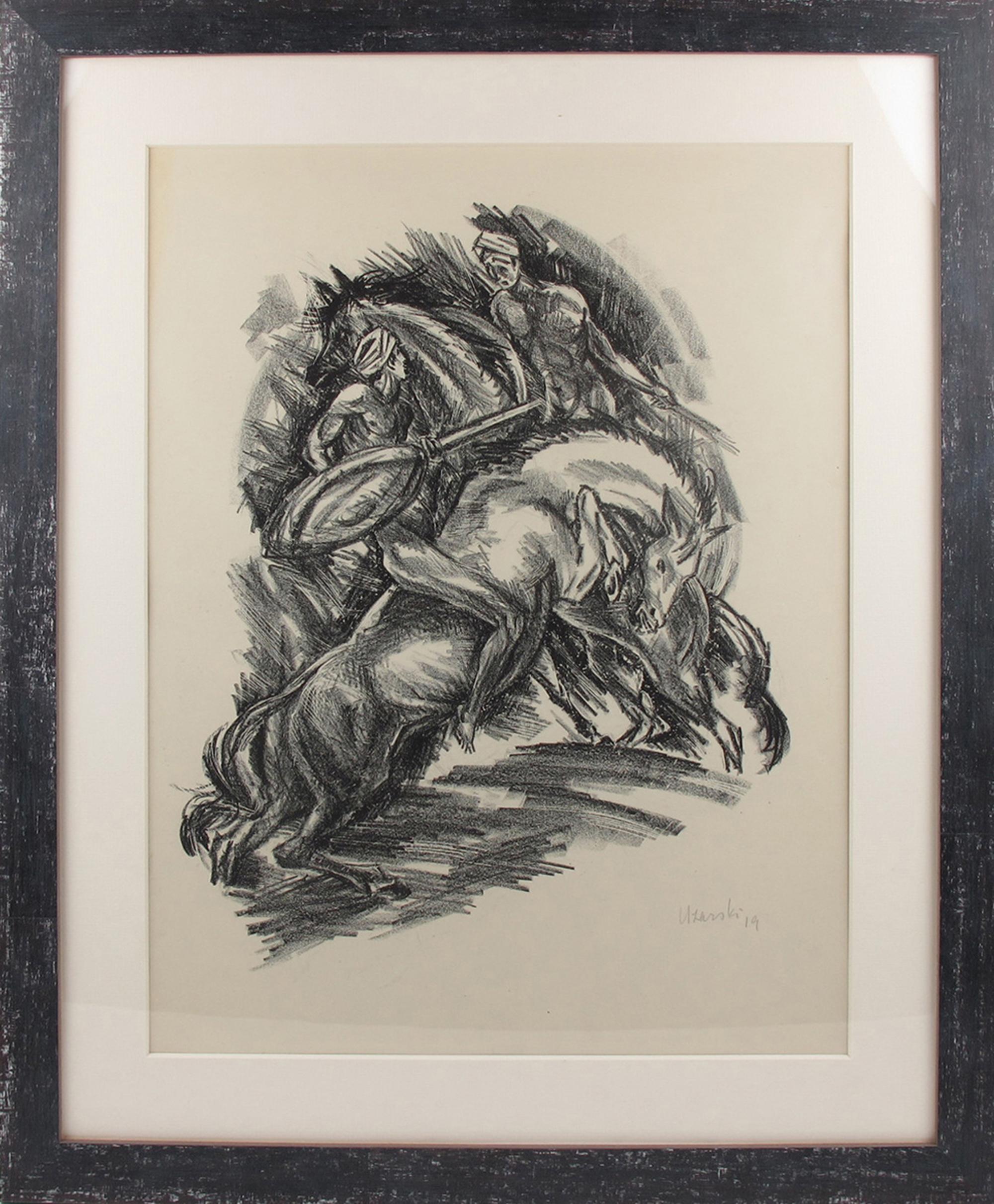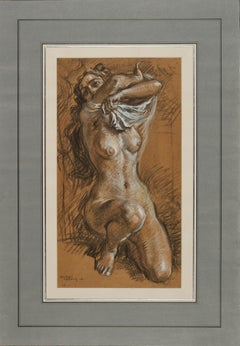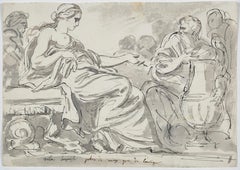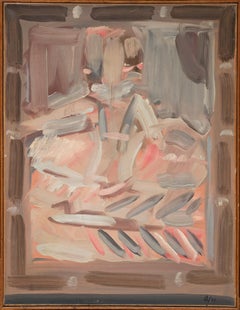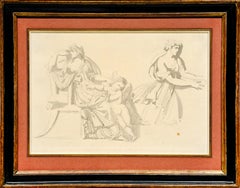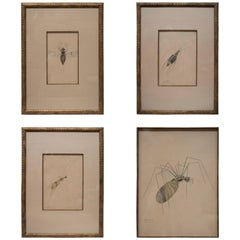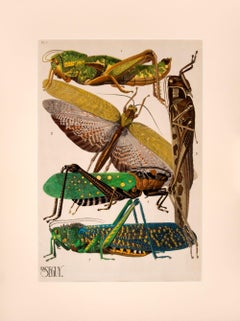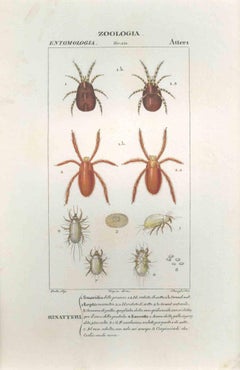Items Similar to Aranea diadima a study by Walter Spies, an artist living in Indonesia in the 30s
Want more images or videos?
Request additional images or videos from the seller
1 of 5
Walter SpiesAranea diadima a study by Walter Spies, an artist living in Indonesia in the 30s1925
1925
$5,396.31
£4,014.31
€4,500
CA$7,389.39
A$8,215.99
CHF 4,289.94
MX$100,008.64
NOK 54,737.74
SEK 51,286.65
DKK 34,256.01
Shipping
Retrieving quote...The 1stDibs Promise:
Authenticity Guarantee,
Money-Back Guarantee,
24-Hour Cancellation
About the Item
Walter Spies was one of the first Europeans to settle in Bali after a stay in Java. He greatly contributed to the discovery and popularization of Balinese culture. Passionate about the study of nature, he produced many studies of insects in the Dutch naturalist tradition. In this watercolour from 1925, Walter Spies presents us with a spider, deliberately enlarged, both threatening and hypnotic.
1. Walter Spies, the adventurous life of a multi-talented artist
Walter Spies was born on 15 September 1895 in Moscow, where his father was a diplomat. After studying painting and music in Germany, he embarked in 1923 for Java, then under Dutch rule. He was welcomed to the court of the Sultan of Jogjakarta, who asked him to form a western orchestra, He also studied the local music, the gamelan.
In 1927 he moved to Bali, where he met the Mexican artist and anthropologist Miguel Covarrubias (1904-1957), then on his honeymoon with his wife Rose. Covarrubias wrote of their stay: "The months went by as Rose and I roamed all over the island with Spies, watching strange ceremonies, enjoying their music, listening to fantastic tales, camping in the wilds of West Bali or on the coral reefs of Sanur. Walter loved to collect velvety dragonflies, strange spiders and sea-slugs, not in a naturalist's box, but in minutely accurate drawings. For days at a time he would be in his tent drawing them, because once dead, their beautiful colours disappeared. "
Spies discovered Balinese music, which he was the first to record. He collected all the island's art forms, opening the first museum on the island and becoming its first curator. Having initially lived near Ubud in central Bali, in 1937, he moved to the Kerangasem district on the northeast tip of the island. He made friends with most of the Western travellers, whom he welcomed into his home, such as the Swiss painter Theo Meier (1908 - 1982) or the Austrian writer Vicky Baum (1888 - 1960). Baum wrote her masterpiece, Love and Death in Bali (published in 1937), thanks to Spies' insights into the island's history.
The end of Spies' life was more sombre: arrested in December 1938 as a homosexual, he was imprisoned until September 1939, when he was released thanks to the intervention of his friends, including the American anthropologist Margaret Mead (1901-1978), before being charged with paedophilia and arrested again. Interned as a German spy at the beginning of the Second World War, he was deported in 1942 on the SS Van Imhoff, which was sunk by a Japanese bomb en route to Ceylon. Walter Spies drowned like most of the prisoners on board.
2. Description of the artwork
This spider illustrates Spies taste for naturalist studies recorded by his friend Miguel Covarrubias. Dated 1925, it was probably done when the artist was staying at the court of the Sultan of Jogjakarta. The spider is shown in motion, perched on its long hairy legs. The details of the spider's body are rendered in meticulous and rich colour. The spiders eye seems to stare at the viewer, as if to hypnotize us into its web.
The artist uses the Nordic tradition of nature studies, in an art deco spirit, marked by the stylization of the animal, synthesized into almost geometric forms.
The inscription aranea diadima seems fanciful to us. Aranea diadima or Araneus diadematus is the scientific name for the garden spider, which is commonly found in Europe and North America but not in Java. While its colour can vary from beige to the darkest grey, it is recognisable by the white cross on its dorsal abdomen. We believe that Walter Spies used this name, which he knew, to describe a Javanese species that we have unfortunately been unable to identify.
The watercolor was done on strong cardboard, decorated with Chinese calligraphy on the back. It is difficult to say whether Walter Spies is the author of this calligraphy, which shows a certain mastery of the brush. The text does not seem to have been cut even though it is relatively obscure. The translation "shan qin hua hong - shi bu shi : the mountain is green, the flower is red - isn't it?” leads us to believe that it could be a calligraphic exercise rather than a real message. In any case, Walter Spies' use of it (the text is upside down when the cardboard is turned over) leads us to believe that it is certainly a reuse unrelated to the subject of the watercolour.
We have framed it in a gilded faux bamboo frame that emphasizes its exotic character.
- Creator:Walter Spies (1895 - 1942, German)
- Creation Year:1925
- Dimensions:Height: 8.27 in (21 cm)Width: 10.63 in (27 cm)
- Medium:
- Movement & Style:
- Period:
- Condition:Watercolor on cardboard showing Chinese characters on the back 21 x 27 cm (37.5 x 43.5 cm framed) Signed and dated on the left side "Walter Spies 1925" Framed in a gilded faux bamboo frame.
- Gallery Location:PARIS, FR
- Reference Number:1stDibs: LU156828947452
About the Seller
5.0
Vetted Professional Seller
Every seller passes strict standards for authenticity and reliability
Established in 2020
1stDibs seller since 2021
10 sales on 1stDibs
Typical response time: 2 hours
- ShippingRetrieving quote...Shipping from: PARIS, France
- Return Policy
Authenticity Guarantee
In the unlikely event there’s an issue with an item’s authenticity, contact us within 1 year for a full refund. DetailsMoney-Back Guarantee
If your item is not as described, is damaged in transit, or does not arrive, contact us within 7 days for a full refund. Details24-Hour Cancellation
You have a 24-hour grace period in which to reconsider your purchase, with no questions asked.Vetted Professional Sellers
Our world-class sellers must adhere to strict standards for service and quality, maintaining the integrity of our listings.Price-Match Guarantee
If you find that a seller listed the same item for a lower price elsewhere, we’ll match it.Trusted Global Delivery
Our best-in-class carrier network provides specialized shipping options worldwide, including custom delivery.More From This Seller
View AllStudy for the Spring (preparatory to the Four Seasons) by René-Marie Castaing
Located in PARIS, FR
René-Paris Castaing, winner of the Grand Prix de Rome in 1924, left a large body of work, both sacred and secular. Many churches in the Pyrénées-Atlantiques, in South-West France still bear witness to the diversity of his talent. In 1942, he began a major decoration project for the Château de Diusse, in the north-east of the county, including an allegory of the four seasons. The vigorous pastel we are presenting here is a study for Spring, depicted as Flore undressing. This commission was a veritable swan song for the artist, who died a year later at the age of 47.
1. René-Marie Castaing, the great inter-war painter in Pau
René-Marie Castaing was born in Pau on December 16th 1896. His father, Joseph Castaing, was also a painter: he was the official portraitist of Pau's high society, which was particularly cosmopolitan at the end of the century, when many rich foreigners spent the winter in Pau, taking advantage of the mild weather to enjoy an outdoor lifestyle punctuated by hunting, horse ridings and golf.
René-Marie Castaing was admitted to the Ecole Nationale Supérieure des Beaux-Arts in Paris in April 1920 and entered the studio of Paul-Albert Laurens (1870-1934). In 1924, he was awarded the First Grand Prix de Rome for Painting, which earned him a stay at the Villa Médicis for more than three years. He then returned to Pau in 1928, where he lived until his death.
Castaing's work is marked by the academic tradition, in which drawing plays as important a role as painting. Although his drawings are often sketches that help to set up large painted compositions, they stand as independent artworks in which the artist fully expresses the vivacity of his talent.
Castaing was a fervent Christian and religious painting played an essential part in his work, as shown by the decorations he created for the churches of Bizanos, Borce, Bidache and Salies-de-Béarn. The painter also created several secular decorations, such as that for the dining room of the Villa Saint-Basil's in Pau in 1935, and the Hunting at the Albret’s time commissioned in 1940 by the Prefecture of Pau. The décor created in 1942-1943 for the Château de Diusse, a mansion located north-east of Pau, was his last large-scale décor, as the painter died shortly after its completion on December 8th 1943.
2. Description of the drawing
Our pastel depicts an eminently secular theme: Spring is embodied by Flore, crouching on the ground with one knee touching the ground. She reveals her ample bosom by removing her shirt, her arms raised above her shoulders to undress.
Given Castaing's classical training at the Beaux-Arts and the influence of ancient statuary...
Category
1940s Art Deco Nude Drawings and Watercolors
Materials
Pastel
Study in the Antique Style, a neoclassical drawing by Augustin Pajou
Located in PARIS, FR
In this lively and fresh drawing, probably taken from one of the artist's notebooks, Pajou presents us with a composition freely inspired by antiquity, as a souvenir of a visit to th...
Category
1750s Old Masters Figurative Drawings and Watercolors
Materials
Ink
Infanta - Study Number 6, a 1960 painting by Fermin Aguayo after Velázquez
Located in PARIS, FR
Initialled and dated lower right "a/60", countersigned and dated on the back "aguayo 60".
A breath of modernity animates this iconic work, inspired by Velázquez' portrait of the Inf...
Category
1960s Modern Portrait Paintings
Materials
Canvas, Paper, Oil
Frieze of antique figures, a drawing by the sculptor Antoine-Denis Chaudet
Located in PARIS, FR
Faithful to the neo-classical taste, sculptor Antoine-Denis Chaudet presents us with a frieze of antique figures executed in gray wash over pencil strokes, which is likely inspired b...
Category
Early 1800s Old Masters Figurative Drawings and Watercolors
Materials
Paper, Pencil, Ink
Allegory of Chastity, a drawing attributed to G. Porta with great provenance
Located in PARIS, FR
This magnificent drawing from the Venetian Renaissance intrigues us in many ways. It depicts an allegorical composition whose meaning partly escapes us: a veiled figure seated on a stone bench (which we have identified as Chastity), seems to be turning away from a woman's bust beside her, below which are two rabbits, a traditional allegory of fertility, but also sometimes of lust.
This drawing, executed on blue paper, undoubtedly belongs to the Venetian Renaissance. The inscriptions on the back of the old mounting board indicate the various attributions considered by its last owner, the British painter and art historian Sir Lawrence Gowing. We have retained the attribution to Giuseppe Porta proposed by art historian John Arthur Gere as the most relevant.
We were incredibly fortunate to find a hexagonal frame of a very similar format for this drawing, the upper corners of which were formerly cut (irregularly). This 17th-century Dutch frame comes from an aristocratic collection in Lombardy, and creates a kind of fascinating chase around this Venetian drawing...
Category
16th Century Figurative Drawings and Watercolors
Materials
Chalk
Study for « The Chinese Masquerade » by Jean-Baptiste Pierre (1714 - 1789)
By Jean-Baptiste Pierre
Located in PARIS, FR
Arriving in Rome in June 1735 as a resident at the Royal Academy, Pierre was unable to attend the Winter Carnival festivities of 1735, which he nevertheless immortalised in an engrav...
Category
1730s Old Masters Figurative Drawings and Watercolors
Materials
Graphite
You May Also Like
WALTER SPIES Insect Studies WATERCOLORS – Set of 4
Located in Hawthorne, CA
Set of 4 Signed Walter Spies Watercolor Insect Studies – Framed & Custom Matted
An exceptional and rare set of four original watercolors by renowned arti...
Category
Mid-20th Century Russian Mid-Century Modern Drawings
Materials
Paper
$7,600 / item
Insectes
By Eugene Alain Seguy
Located in London, GB
Seguy, E.A.
Insectes.
Paris, Du Chartre et van Buggenhoudt [1924]
Each print is produced entirely by hand using a unique printing process called pochoir, which was popular in Fran...
Category
1920s Art Deco Animal Prints
Materials
Gouache, Lithograph
Apterous - Etching by Jean Francois Turpin-1831
By Pierre Jean François Turpin
Located in Roma, IT
This is one of the illustrations of "Dizionario di scienze naturali" (Natural sciences dictionary) edited by Battelli nel 1831. The work was made of 29 volumes, containing hundreds o...
Category
1830s Modern Animal Prints
Materials
Etching
$167 Sale Price
30% Off
Creature - Drawing by Joseph Alexander Colin - Mid-20th Century
Located in Roma, IT
Creature is a drawing realized by Joseph Colin in the Mid-20th Century.
Pencil on ivory-colored paper
Good conditions with slight foxing.
The artwork is realized through deft expr...
Category
Mid-20th Century Modern Figurative Drawings and Watercolors
Materials
Pencil, Paper
Gwendolyn
By Robert Bowen
Located in Santa Monica, CA
Acrylic on canvas
Category
2010s Contemporary Drawings and Watercolor Paintings
Materials
Canvas, Acrylic
Price Upon Request
Art Deco Fantasy Illustration Drawing Painting Lithograph by Adolf Uzarski
Located in Atlanta, GA
German Artist Adolf Uzarski (1885 - 1970) designed this stunning charcoal drawing lithograph print on paper, depicting two riders in a wild dance or fight. This drawing is part of a ...
Category
1910s Art Deco Animal Paintings
Materials
Paper
More Ways To Browse
The Prisoner
Antique Rose Drawing
Antique Japanese Drawings
Spider Painting
Art Deco Flowers Painting
Dead Animals
Antique Bombs
Holland And Holland Watch
Antique Japanese Watercolor Painting
Bali Antique
Long Island Watch
Watch 1942
Chinese Court Paintings
Garden China Made In Japan
Bamboo Coral
Art Deco Painting Roses
Paintings Coral Flower
Antique Watercolor Box Boxes
